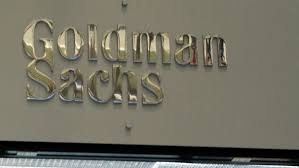Goldman’s Take On What Chaos a Market Crash Will Bring To The Economy

There is a simple reason why for the past decade, despite all the rhetoric central bankers have been focusing on just one thing – reflating risk assets in general and the stock market in particular – because if you get stocks higher, everything else will eventually follow; call it the “wealth effect and confidence pass thru channel.”
This observation forms the basis of a report released overnight by Goldman’s economics team, which claims that the 26% increase in the stock market since the start of 2017 “has been the most important driver of the recent easing in financial conditions, which are now at their easiest level since 2000”, something we showed yesterday.
So what has been the stock market’s contribution to the economic rebound since the Trump election? Here Goldman estimates that “higher equity prices are currently boosting GDP growth by nearly +0.6pp, and account for about two thirds of the +1pp growth impulse from overall financial conditions.”
Of course, the market impulse has to continue – i.e., the market has to keep rising – or else the economic response becomes muted: “Our base case is that the equity impulse to growth decelerates to +0.3pp by Q4 as equity price gains slow” Goldman explains.
For the econometricians, here are some further insights from Goldman on the favorable economic effect from rising stocks
We have argued that the most important reason for the acceleration in growth last year and for growth optimism in 2018 is the sharp positive swing in the impulse from financial conditions, which are now at their easiest level since April 2000. The run-up in the equity component of the FCI has accounted for rughly half of the 137bp index easing in 2017 and 80% of the of 32bp easing year-to-date (Exhibit 1).
Economic research has shown that rising equity prices boost activity, for instance via wealth effects on consumer spending. However, higher equity values not only cause but also reflect stronger growth… To deal with the reverse causation issue, we next use the VAR decomposition to isolate the boost to real GDP growth from the increase in equity prices driven by financial shocks alone. In practice, the estimated impulse from financial shocks to equity prices—shown in Exhibit 3—tends to equal roughly 60% of the mechanical contribution from equity prices, shown in Exhibit 2. We estimate that equity prices are currently contributing nearly +0.6pp to real GDP growth, up from -0.25pp in early 2016, as shown in Exhibit 3.
The stock market currently thus accounts for nearly two-thirds of the total +1pp growth impulse from financial conditions. A calculation based on the wealth effects literature—which finds that a $ 100 increase in financial wealth increases consumption by about $ 1.5 in the first year—gives similar results.
The excerpt above is all anyone needs to understand why central banks are always primarily focused on boosting asset prices: keep the confidence high, raise the “wealth effect” and spending optimism, and the economy will recover.
The problem, of course, is that we are now almost 10 years into the current market, and economic, expansion. Which begs the question what happens to the economy if and when the market meltup i) slows and ii) finally ends, leading to a crash.
To answer part one, Goldman writes that its baseline expectation “is for the equity impulse to real GDP growth to decelerate from +0.6pp currently to +0.3pp by Q4.”
This assumes that the equity component of the FCI—equity prices normalized by a 10-year moving average of earnings per share (EPS)—stays at current levels, which is roughly consistent with our portfolio strategists’ forecast of a 2,850 S&P500 index and $ 150 EPS by year-end.
What about the worst case scenario: a sharp, 20% crash? Here is Goldman:
We first consider a sharp correction, where stock prices fall 20% in Q1 and stay flat afterwards, reminiscent of the 20% Black Monday crash in 1987. In this scenario, we estimate that the growth impulse from equity prices turns from a +0.6pp boost currently to a -0.5pp drag by early 2019 on a 4QMA basis, as shown in Exhibit 4. All other things equal, this bear market would still result in positive GDP growth in 2018 of 1.9% on a Q4/Q4 basis—significantly below our 2.6% baseline forecast—but have only a minor negative effect on growth in 2019.
Having brought up the nightmare scenario, Goldman then amicably concludes:
We conclude that the recent run-up in equity values is a key contributor to current strong growth, and that sharp stock market moves represent an important two-sided risk to our constructive near-term growth forecast.
In other words, the market will keep rising, pushing the economy higher, which in turn will be discount by the market, which will keep rising, and so on.
* * *
There are two fascinating observations with this analysis.
The first is that Goldman is now actively considering a Black Monday-style market crash scenario and its impact on the market. Naturally, the mere consideration of this outcome is enough to “incept” the though among Goldman’s client who will now wonder why Goldman even had to bring it up.
The second, of course, is that contrary to Goldman’s assumptions, “all other things” are never equal, and should the S&P plunge 20%, something it hasn’t done in a decade, it will unleash a waterfall of downstream consequences, which will hammer the economy so hard, we will skip recession and proceed right into the depression that has been deferred by trillions in central bank liquidity ever since 2008/2009.
It also means that Trump should probably stop highlighting where the S&P closes every day because with every passing day we get closer to the point where none other than Trump himself will be blamed for not only the next “Black Monday” collapse in the S&P, but the next Depression too.





